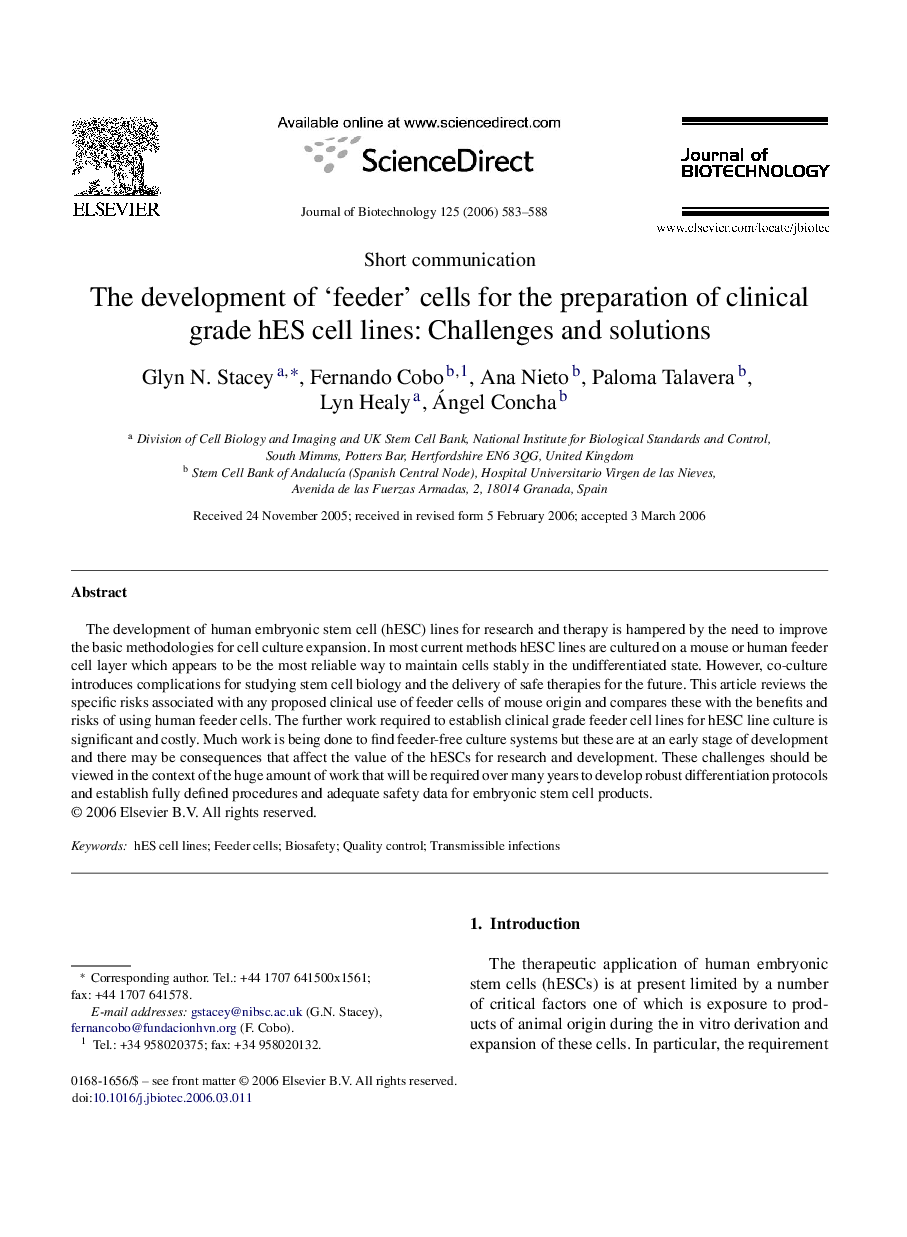| Article ID | Journal | Published Year | Pages | File Type |
|---|---|---|---|---|
| 25599 | Journal of Biotechnology | 2006 | 6 Pages |
The development of human embryonic stem cell (hESC) lines for research and therapy is hampered by the need to improve the basic methodologies for cell culture expansion. In most current methods hESC lines are cultured on a mouse or human feeder cell layer which appears to be the most reliable way to maintain cells stably in the undifferentiated state. However, co-culture introduces complications for studying stem cell biology and the delivery of safe therapies for the future. This article reviews the specific risks associated with any proposed clinical use of feeder cells of mouse origin and compares these with the benefits and risks of using human feeder cells. The further work required to establish clinical grade feeder cell lines for hESC line culture is significant and costly. Much work is being done to find feeder-free culture systems but these are at an early stage of development and there may be consequences that affect the value of the hESCs for research and development. These challenges should be viewed in the context of the huge amount of work that will be required over many years to develop robust differentiation protocols and establish fully defined procedures and adequate safety data for embryonic stem cell products.
